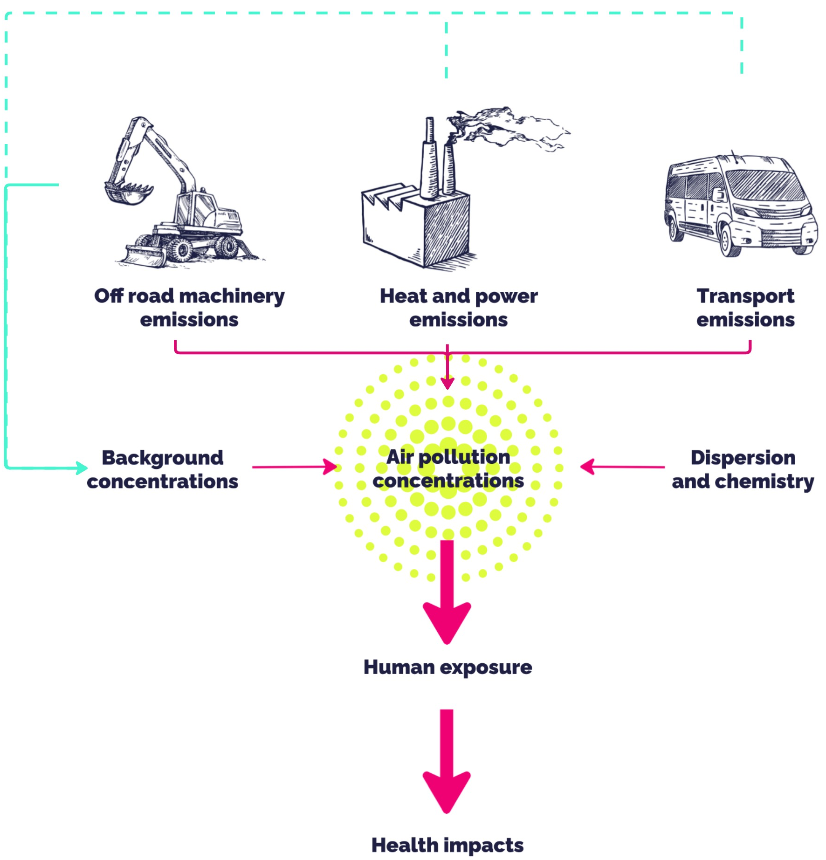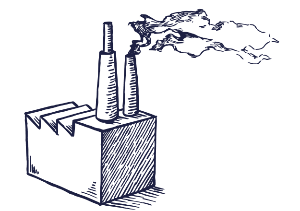The Air Pollution Footprint Partnership (APFP) aims to help organisations understand, report and take action on air pollution. It is being managed by the Air Quality team at Ricardo, a team passionate about creating a future where everyone breathes clean air.
So what is air pollution?
The World Health Organization (WHO) have a good, simple definition of air pollution. The WHO define air pollution as a mix of hazardous substances from both human-made and natural sources. Human made sources of pollution are referred to as anthropogenic sources.
There are a wide range of sources of anthropogenic emissions. These include emissions from vehicles, space heating and cooling, and power generation. Burning some fuels leads to much greater emissions relative to others.
Air pollution is important because it has damaging impacts on human health, productivity, and the health of the environment. These detrimental impacts have associated economic, and wider social costs, and commonly are known as external costs or damage costs. Understanding these costs can help determine the scale of mitigation action needed.
Emissions and concentrations – how are they related?
Air pollutant emissions are the quantity of a pollutant emitted in given time from a source – for example, in tonnes per year. Once an emission of an air pollutant is released to air and mixes into the atmosphere, it will become a concentration – and it is then expressed as the amount of pollution in a volume of air. It is then the concentration of these pollutants in the air we breathe that determines their health and wider environmental impacts. The diagram below shows the relationships between emissions, concentrations and human health impacts.

Which pollutants are important?
There are a wide range of air pollutants (AP) that are emitted when fuels are burnt. Some pollutants are much more important than others because they can be emitted in sufficiently large quantities to be harmful to human health and the environment. Local air quality can be affected by emissions of air pollutants. Some pollutants can travel large distances – beyond county and country borders. These are referred to as transboundary pollutants.
The largest source of emissions my vary from pollutant to pollutant. However, in general terms, the combustion of solid and liquid fuels such as coal, wood, and oil tend to produce the highest emissions per unit of fuel burned.
The spreadsheet tool concentrates on three important pollutants released when fuels are burnt: NOx, and two variants of particulate matter, PM10 and PM2.5.
What is the difference between an air pollutant and a greenhouse gas?
Air pollutants, such as NOx, PM10, SO2, and CO, are short-lived in the atmosphere. The impacts of concern are closer to the Earth's surface, such as the impact on human health. Poor air pollution increases the risk of respiratory infections, heart disease and lung cancer. Children and elderly people are more susceptible to the increased risk.
Greenhouse gases (GHGs), such as CO2, CH4, and N2O, remain in the atmosphere for a longer period of time. GHGs absorb some frequencies of infrared emitted from the Earth's surface, trapping heat in the atmosphere that would have otherwise been re-radiated into space. The impacts of a warming climate include increased drought, drinking water shortages, rising sea levels and an increase in disease e.g malaria.
What are the sources of air pollution?
The UK’s National Atmospheric Emissions Inventory (NAEI) tell us that the most important sources of direct air pollution emissions are transport, combustion plants and non or off-road mobile machinery (NRMM).
Our tool focuses on these three areas:

Road transport
This is your own vehicle fleet and staff business travel.

Heat and power
The fuel you burn in boilers and other combustion plants, and your use of electricity.

Off-road machinery
Off road equipment that are used for materials handling or construction. Also known as Non-Road Mobile Machinery (NRMM).